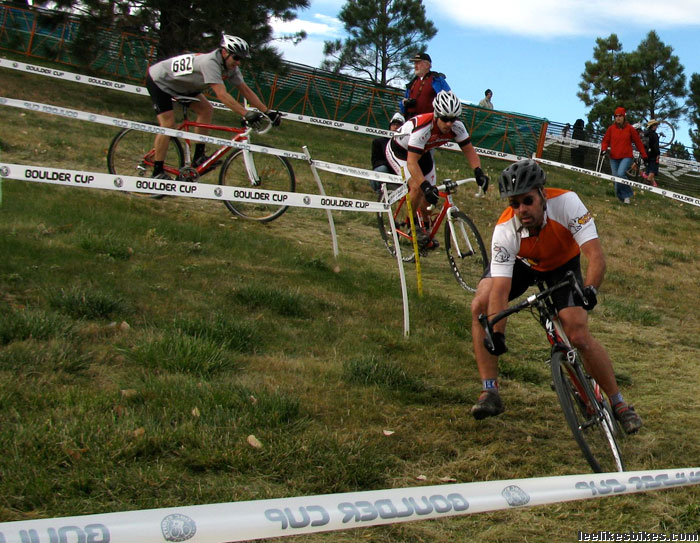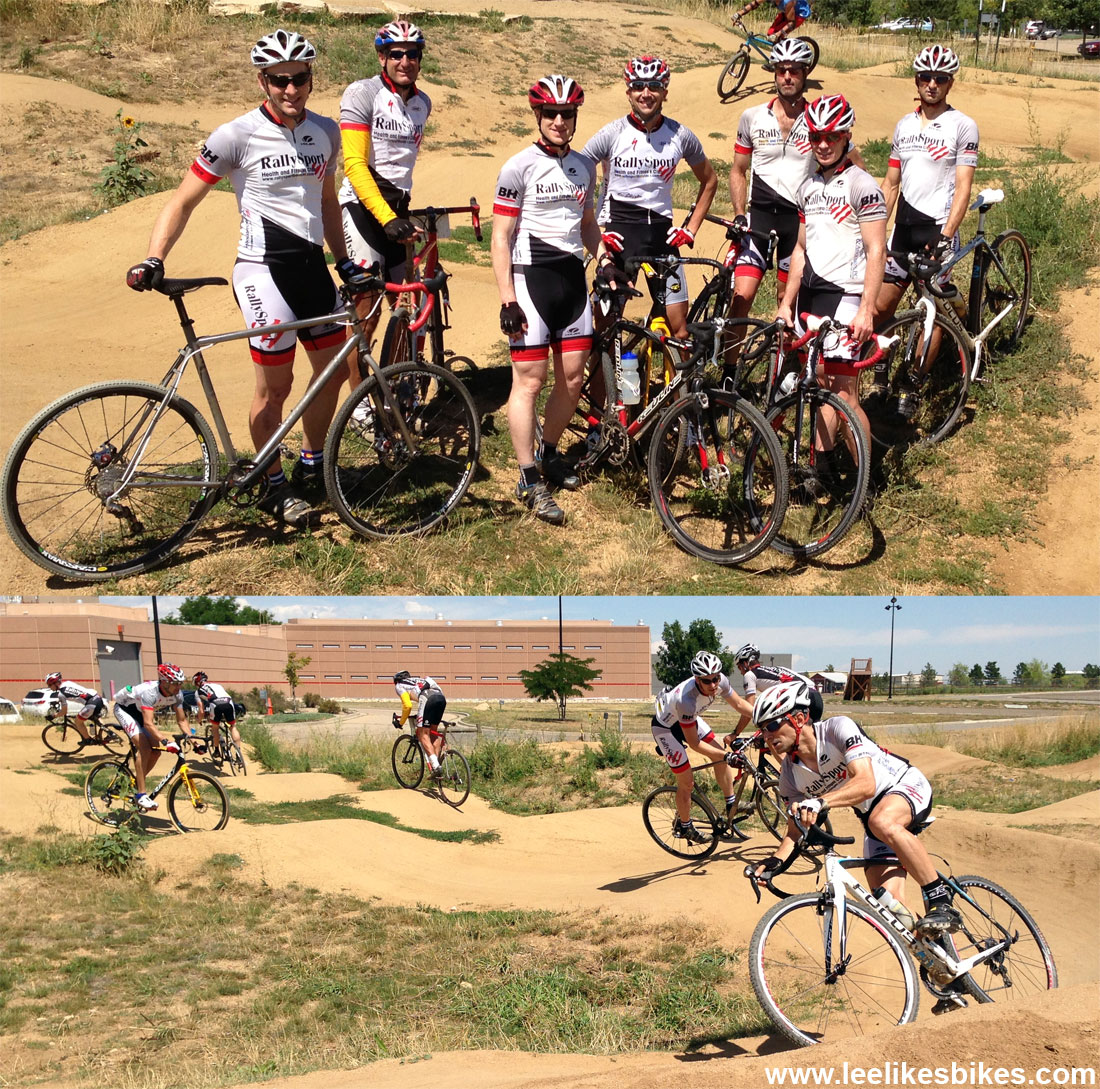Hinged vs unhinged: some bunny hop tips (video)
The higher you want to hop (relative to your ability), the more you need to unhinge and drive with your hips.
Everything to help you ride stronger and better.
The higher you want to hop (relative to your ability), the more you need to unhinge and drive with your hips.
Nose bonks are an easy, efficient way to ride your mountain bike over obstacles.
They’re also a stepping stone to a proper bunny hop.
We should all be doing deadlifts, but many of us don’t have access to a gym (especially during the coronavirus crisis), nor do we have room for big weights at home. Here’s the DIY deadlift device I use when I’m home and on the road.

Place: Valmont Bike Park
Day: Aug. 1 and 6
Time: 5 to 8 p.m.
Cost: $125
Find free time on the course where others struggle
Cyclocross season is coming. You’ve worked hard to get fit, but are your skills slowing you down?
‘Cross courses favor riders who can balance speed in long stretches, finesse through obstacles and carry speed out of turns – and they punish those who can’t. Learn with professional cycling coach Lee McCormack how to turn the ‘cross course into your new bestie.
In this 3-hour intensive course, you’ll learn bike handling skills that will put you ahead of the competition.
Cornering safer and faster
What if you could save .5-1 second in every CX course turn? In a typical cross’ race with 20 turns per lap and nine laps per race, you’re looking at dropping 1-3 minutes just with improved cornering alone. How many places is that worth?
Plus, you’ll be using less energy coming out of every turn so you can save that power for your last lap punch. And now that you’re corning faster and safer, let’s not forget how much time you save when you don’t crash. (Win-win!)
Working the terrain
See opportunities where others see obstacles. Learn how to spy the fastest lines, pump the terrain for increased speed and find flow on the course. Work the course instead of getting worked by it. It’s not only faster and requires less energy – it makes racing that much more fun.
These skills will help you carry more, easier speed all around the course. If we have time, we’ll also look at dismount/remounts and hops.
Class will meet at Valmont Bike Park so you can dial in the terrain that you’ll race in local and national Pro CX events.
Bonus: All attendees get 10% off the Boulder Bicycle Works Speed Treatment — the drivetrain treatment that keeps your bike running smoothly despite gnarly conditions — which is key for CX racing!

Hey Lee,
seeing some good progress with the RipRow so far.
I’ve been struggling with my right shoulder after a crash (as well as the common rolling forward problem due to office work), my physio has given me exercises to adjust my positioning of the scapula and my shoulders in general better.
I showed him the RipRow and the lowrow exercise in particular. He likes the machine and suggests I always pull my scapula’s close to one another (which in turn brings my shoulders back), except when i reach the point of trying to push the bar away as far as possible, IOW he suggests at the end of the push away to also release the scapulas to extend the reach at the end of the spectrum, and when pulling back, start with the scapulas before bending the arms to pull.
What are your thoughts on shoulder/scapula positioning in the shredlift, lowrow and straightrow exercises or on the bike in general? Are there rules of thumb like “always try to keep shoulders back” ?
thanks!
Dieter

Hi Lee! I’ve been poking around your website and it’s great. So much stuff! Also, listened to your interview on the Nourish Balance Thrive podcast (super!) and my coach Lesley Paterson suggested I reach out to you.
Here’s my deal…
I just bought a new bike. It’s awesome. I know I’m going to love it. When I figure out how to handle it. I’ve been riding a full-suspension bike forever (with very small wheels). What I lack in skill and technique I make up for with determination and squish. My new race bike (for xc and xterra) is a 29inch hardtail. It feels like a big change. I do ride cross and have some experience with a more rigid bike…but I feel really out of my element all of a sudden.
My back end pops up, jams me in the rear, chatters my teeth and I simply feel my riding is cringe-worthy.
I want to learn how to handle this thing with finesse and speed. I’ve got GOALS.
I am wondering if you might have a couple simple tips I can take with me when I hit the trails next..or point me in the right direction with your videos, products, online coaching etc. I’d be very grateful.
Thanks Lee!
-Remy
The morning after.. my hamstrings are tight and I walk funny. Usually when I do a bend over stretch i can put my palms on the floor, today I barely make it to the floor.
Should I have stretched more or less or differently? Ironically, regarding the one stretch I do most regularly (bending over) I just found an article saying it’s bad.
thoughts?
Dieter
Hi Lee,
I hope you are doing well!
I am interested, how you structure your endurance training this winter.
I started the Pump Up the Base off-season training program last week and I did half the intervals on the bike trainer and the other half on the RipRow. After each interval, I switched to the other machine.
Later in the program, when the intervals get longer, I will probably also alternate within the intervals.
I read that you are not pedaling at all at the moment!? Are you doing all the PUTB protocols on the RipRow right now or do you adapt anything (the number/lengths of the intervals)?
Thanks!
Lars
If you haven’t seen Rough AF 3, see it now:
The drop-in Jordie does at the beginning of the video … awesome!
I needed to do a little math. Based on eyeball assumptions:
Assuming a height of 16 meters and a transition radius of 8 meters, that yields 4 Gs in the transition.
If Jordie weighs 180 pounds, that’s over 700 pounds. He can be forgiven for collapsing into the rear tire.
Also:
As he transitions from almost vertical to the runout, his handlebars rotate backward dramatically. In LLB language, this is a row.
The row has to happen as fast as the angle changes, which is pretty darn fast: according to my stopwatch, somewhere between 1/4 and 1/2 second. If Jordie doesn’t pull fast enough — and he can be forgiven for this! — he ends up on the back of the bike.
This is so badass.
Lee,
I hope all is well and RipRows are flying out of your garage! I have a quick question for you.
I have been training extensively lately with a heart rate monitor. I notice that my heart rate spikes significantly when I go downhill. I have a hard time keeping in under 160. My max is somewhere around 180. However I don’t feel out of breath or winded when riding downhill. Is this something you have seen before in riders? Any thoughts on it?
Cheers,
Rob
Or: How to build strength on the RipRow.
Our friend Fairlee Frey fairleefrey_mondin is prepping for XCE world championships. Her coach Mike Durner coachdurner has devised a 12-week build — and they’re incorporating RipRow into the mix.
